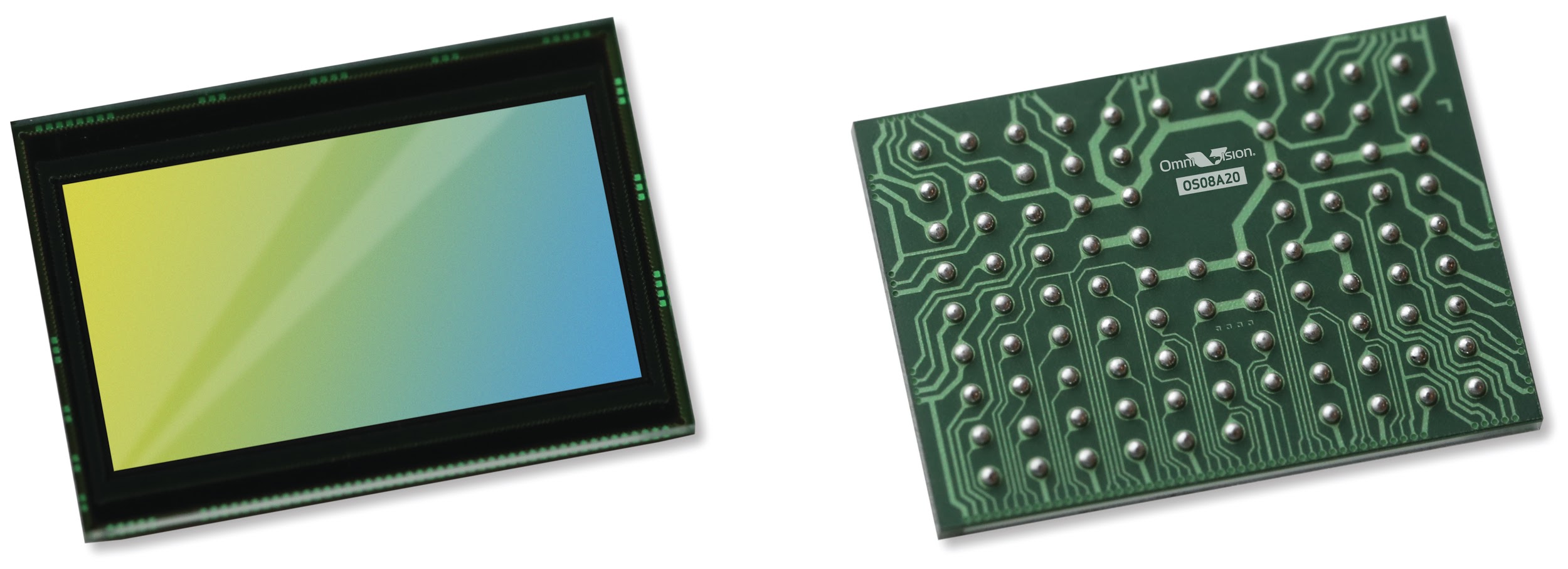By Heather Hamilton, contributing writer

The OmniVision OS08A20 image sensor targets surveillance systems and body cams. Image: OmniVision.
Image sensors work in much the same way as film, allowing light to enter and exposing the image to the sensor. These devices are available in two flavors — CMOS image sensors or charge-coupled devices (CCDs). While CCDs have traditionally held the upper hand because of light sensitivity and higher resolution, developments in CMOS image sensors are changing the game. Combined with their cheaper price, they also offer faster processing, lower power usage, and integrated camera functions.
A new report released by IC Insights predicts record high growth for digital camera applications in vehicles, machine vision, camera phones, and human recognition and security systems, leading to another record-setting year in image sensor sales growth — as much as 10%. The growth also marks a decline in sales for CCDs and the continued expansion of embedded digital imaging capabilities.
CMOS image sensors accounted for 89% of total image sensor sales in 2017 thanks to improvements in performance in varying light, high-speed imaging capabilities, higher resolution, and added functionality across a wide variety of specific applications. Camera phones represent 62% of 2017 CMOS sensor sales as smartphone manufacturers add dual lens functionality for bigger, better camera capabilities.
A year ago, designers were calling for smaller pixel technologies with increased light performance in a smaller package, and their demands have been answered.
OmniVision Technologies, a developer of advanced digital imaging solutions, for example, recently announced the rollout of the OS08A20, an image sensor with Nyxel near-infrared (NIR) technology. The company said that it is the first sensor with 8 megapixels that comes with both Nyxel and PureCel pixel architecture, allowing it to capture high-resolution video and images in a variety of lighting conditions. In a press release, the company noted that this makes the new device well-suited for surveillance and even body cameras for law enforcement.
The ability to perform in low light (and thus decreasing the need for additional external lighting sources) also lowers power usage while still offering the capability to capture colored images during daylight. The sensor is expected to begin volume production in the second quarter of 2018.
In April, ON Semiconductor joined the game, too, introducing its first CMOS image sensors with NIR technology. Like OmniVision’s, the 5.1-megapixel AR0522 is designed to work in low light and is expected to be used in surveillance camera systems. The AR0522 delivers twice the sensitivity in the near-infrared wavelength compared to the previous ARO521 device.
The AR0431 is a 1/3.2-inch 4-megapixel sensor that offers low-power modes and a frame rate of up to 120 fps. ON Semi said that it is useful for security cameras that operate on batteries because of their low-power requirements, as well as action/sports cameras and in-car DVRs. The image sensor is well-suited for applications that require slow-motion video.
The ARO522 (12 x 12-mm mPLCC) is available in volume production. Mass production will start in July 2018 for the ARO431 (10 x 10-mm mPLCC).
Other major players in the marketplace include Sony, Samsung, Panasonic, Canon, SK Hynix, STMicroelectronics, Pixart Imaging, PixelPlus, Hamamatsu, ams, Hiax, Teledyne, and Sharp.
Advertisement
Learn more about Electronic Products Magazine





